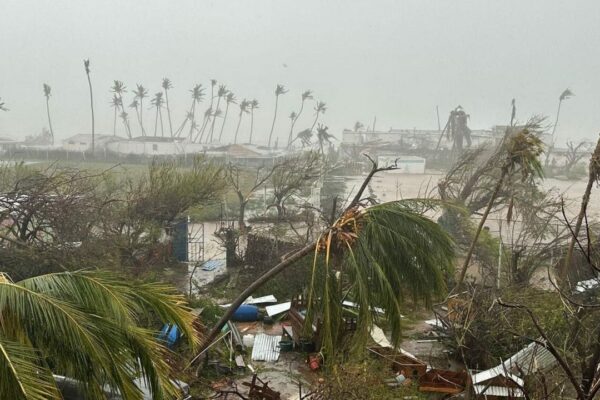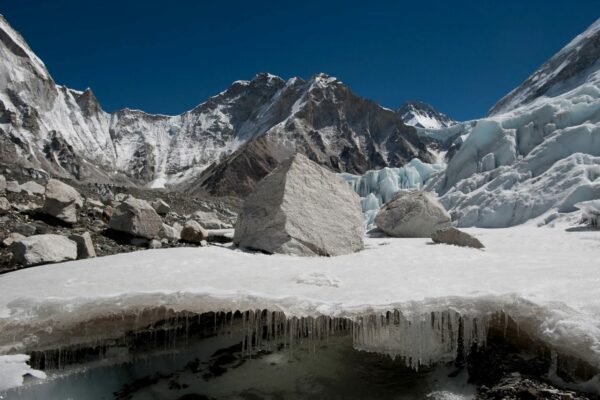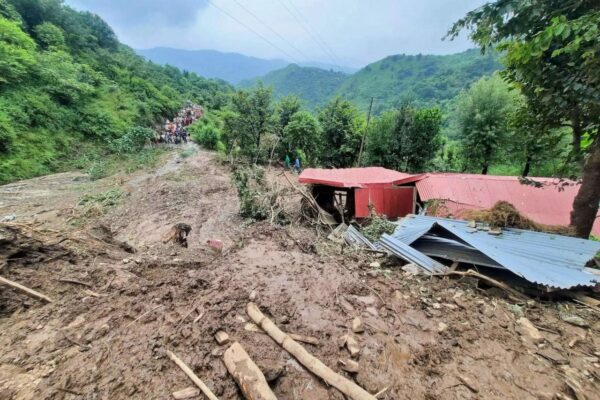Blundering Hydropower Projects are Ravaging the Himalayas
A deadly flash flood broke down in the Northern State of Uttarakhand on February 7, after a Himalayan glacier broke down abruptly. The catastrophe destroyed two hydroelectric dam projects and reported deaths tolling up to 200. While most labeled the tragedy as a natural occurrence, experts believe that such disasters are triggered by mismanaged hydropower projects that are ravaging the Himalayas for years.
Nearly 205 people were missing out of which, only 74 bodies and 34 separate body parts could be traced down. Local authorities have declared the unreported people as “dead” and have initiated issuing death certificates for the victims.
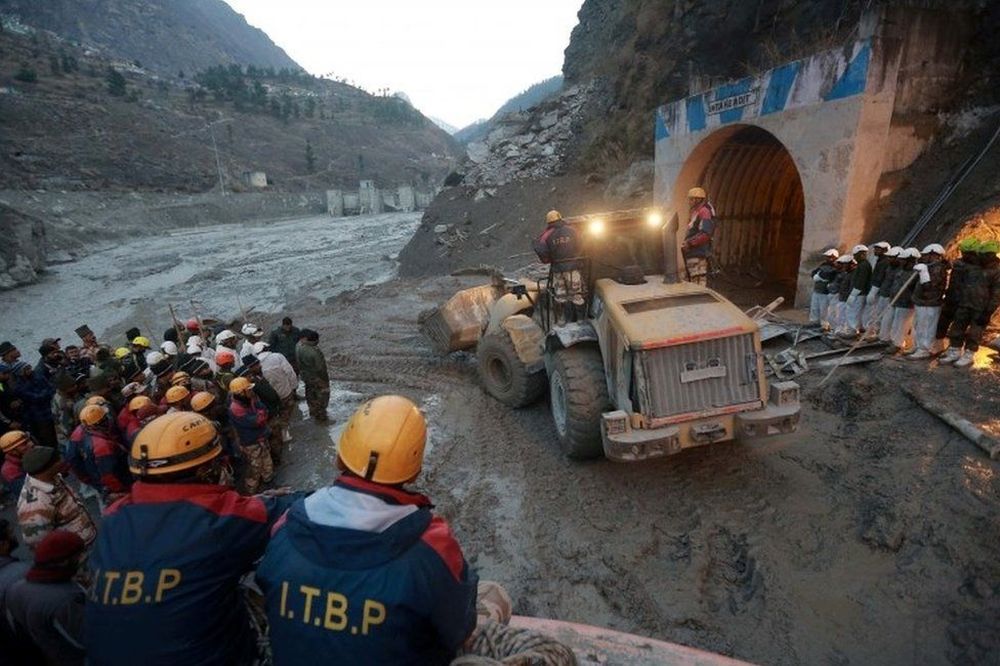
The Himalayan catastrophe on February 7 kills more than 200 people | Image: International Rivers
‘They were warned’: Experts on Catastrophe
The environmentalists, who have been studying the Himalayan glaciers for decades have associated the disaster with climate change. However, the abrupt flash flood of February 7 should not be blamed on “nature’s fury” alone. Based on past disasters, experts have linked it with the hydropower construction projects in Uttarakhand valleys.
In 2013, similar flash floods killed more than 5,700 people in Uttarakhand. Experts immediately drew the connection between the disaster and the hydropower construction projects, criticizing that the hydropower projects have intensified the floods.
It shows that nature will strike back if we disregard the ecological limits of fragile regions like the Himalayas through reckless dam building and other infrastructure development.
Peter Bosshard, the policy director at International Rivers, said after the deadly floods in 2013.
The Supreme Court of India mandated a panel of experts to scrutinize failure to abide by the policies that contributed to the disaster. The panel called out the hydropower developers to cease their operations and argued that it amplified the intensity of the floods in the region. They were also asked to install flood warning systems.
The expert panel showed concerns about blooming hydroelectric projects in Uttarakhand. But the Indian governmental organization and agencies ignored the warnings and proceeded to build dams on Himalayan rivers. Today, there are over two dozens medium and large-scale hydropower projects in Uttarakhand.
Hydropower Projects Ravaging Himalayas
Environmentalists have also stated that Tapovan Vishnugad hydroelectric project, which was damaged in February 7 flash flood, exacerbated the disaster. The dam was built by the National Thermal Power Corporation of India, financed by the Asian Development Bank. The banks and agencies were aware of the continuous warnings in the area since 2013. However, The ignorance costed the lives of nearly hundreds of people near the project site.
Rishiganga Hydroelectric powerplant was the second affected project. It was completely swept away by the flash floods. Rishiganga project site has been destructed by cloudbursts, landslides, and floods between 2008 and 2016, but the project was never suspended. In 2019, residents of Raini Village, known for their role in the Chipko Movement worldwide, filed public interest litigation (PIL) against the authorities in the Uttarakhand High Court. The PIL also did not lead to any constructive action.
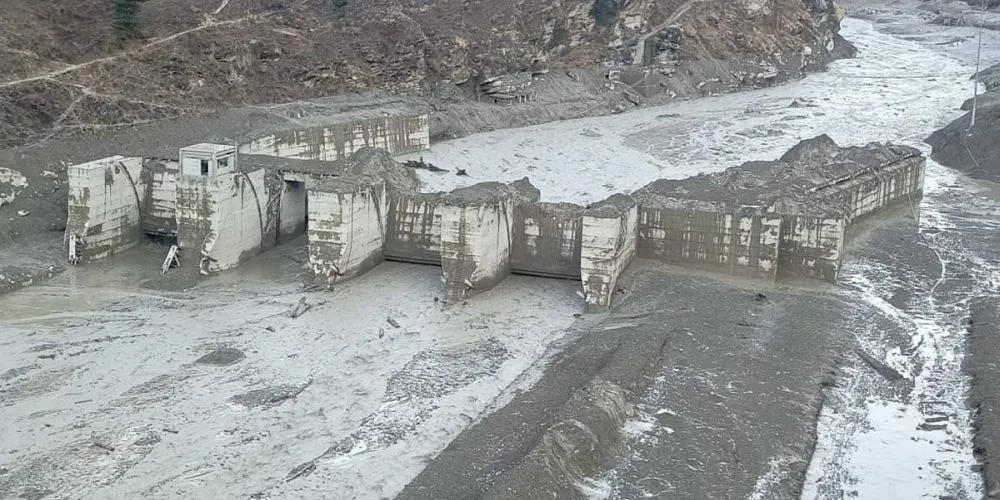
Uttarakhand Glacier Burst sweeps away the Rishiganga hydropower project | Image: The Wire
Those behind these projects have fortified their actions against the criticism from environmentalists by arguing that these projects were built solely to reduce India’s harmful emissions and effects on the local population. It was anticipated that the project, once fully operational, can reduce the carbon emissions to 49,585 metric tonnes of carbon dioxide annually. But the carbon offset project has now washed away in the fragile ecosystem.
Another reason for the rapid expansion of hydropower projects is the continuing “water war” between India and China. In November 2020, the Power Construction Corporation of China announced plans to build 60 gigawatts massive hydroelectric project on the Yarlung Zangbo River. India retaliated the move by announcing plans to build a 10 gigawatts project on Siang, which is the main tributary of the same river, to reduce the impact of China’s hydropower project.
Whether it is to reduce the carbon emissions or clap-back at neighbor rivalries, the hydropower projects pose a significant threat to the region’s ecology and local communities. Despite warnings, the hydroelectric projects have failed to deploy essential safeguards.
Widespread Neglect
Even after all the reported incidents, the Chief Minister of Uttarakhand Tirath Singh Rawat did not hold massive hydropower projects accountable. Instead of committing necessary actions and precautions, he implied that the incident was a natural disaster and supported the hydropower development projects. The central government too did not have much to add on and released the status of dead and missing persons. Currently, 550 hydroelectric projects are under construction or at the planning phase throughout the Himalayas in China, India, Pakistan, Bhutan, and Nepal.
The agencies need to make sure that ecological and social protection is maintained while working on such projects. But these measures have been ignored despite the deaths of thousands due to continued disasters that have hit the region in the last two decades. It reflects the failure and casualty of international and national government agencies. Global agencies like World Bank, Asian Development Bank, and national energy corporations need to be held accountable.
To avoid such tragedies in the future, it is essential to adapt to an ecologically-sensitive model of development. These disasters should not be attributed solely to “nature’s fury” but should also hold government agencies and policymakers responsible for their failure to comply. We cannot let these untimely disasters affect the livelihood of the locals and destroy wildlife.
Credit: Aljazeera
